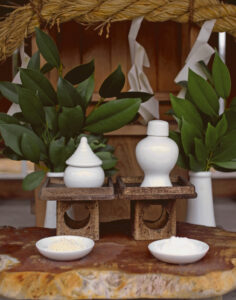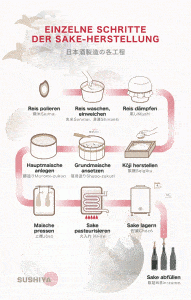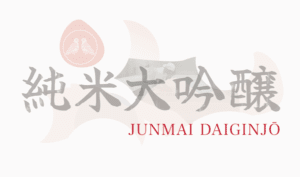Koshu - the new trend aged sake
Aged sake is the latest trend in sake. Here we explain what it is about the associated Sake classification Koshu has to offer.
What is Koshu?
Koshu (古酒) literally means "old sake" at first.
In the sake industry, sake produced and delivered during the brewing year from July 1 to June 30 of the following year is called "shinshu" (new sake).
Sake made in the previous brewing year, on the other hand, is classified as "Koshu" (old sake), and sake made more than a year ago is classified as "Dai-Koshu" (very old sake).
In general, however, any sake that has been aged for a certain amount of time, often has a brownish color and deep flavors, is considered koshu. Currently, there is no clear rule about how many years it must be stored.
What exactly defines "Aged Sake" (Koshu)?
The Aged Sake Association, whose goal is to make aged sake more popular as well as to improve the relevant sake aging/maturing techniques, defines aged sake as "sake that has been aged for more than 3 years at the sake brewery."
Normally sake is meant to be consumed soon, but Koshu is stored by the brewery for several years, changing both its color and taste.
The color is often much darker, close to amber, and the difference is easier to tell than with fresh sake. Oxidation (breakdown of sugars and amino acids / Maillard reaction) tends to make it sweeter - there may even be hints of cocoa, caramel or cinnamon.
Whether sake changes color during aging depends on several factors, the most important being temperature. The lower the temperature, the slower the Maillard reaction and the breakdown of the components, and the slower the color change. There are even transparent vintage sake that are several years old.
The definition of "Koshu" is very broad and there is no exact "dividing line" to distinguish between Koshu of different ages. However, one can always check the production date (noted on the label) to find out when the sake in question was made. This knowledge is probably helpful to determine the personal Koshu favorites, which best suits their own tastes.
What does "Aged Sake" taste like?
Aged sake is a relatively new sake phenomenon that has only recently emerged. It was once a breakthrough within the sake industry, overturning the conventional wisdom that to enjoy sake at its highest possible level of flavor, it should be consumed as quickly as possible.
It was common knowledge that most sake should be consumed soon, in most cases within a year of its production. But it can now be a special treat to taste sake older than a year. Aging can transform it into a more refined, richer sake, just like a vintage wine, for example.
Aged sake has a balance of sweetness, acidity, bitterness and umami while still containing the essential characteristics of Japanese sake. When poured, it exudes sweet aromas such as nuts, caramel and vanilla. The golden color, the particular texture and the long finish also make it unique.
Some people even compare it to sherry wine or Shaoxing wine (fermented Chinese wine), and a wine glass is a great vessel to (visibly) enjoy the flavors.
What is the best way to drink "Aged Sake"?
The aroma and flavor of koshu depend on the temperature at which it is drunk. Some of the light varieties of koshu, such as aged Daiginjō and Ginjō, are best served slightly chilled. The richer varieties are best served at room temperature or lukewarm. If you do not like the intense flavors of aging, you can cool the sake slightly to mellow the flavors.
A sake ceramic vessel or sake glass in the shape of a wine glass is recommended to allow the rich flavors such as red wine or brandy to breathe and enhance.
More about Japanese cuisine?
All about sake www.sushiya.de/sake

Origin and history of Japanese sake
Sake is known in Europe as rice wine - but the simple name does anything but justice to its taste.
Over the centuries, sake has evolved into a complex masterpiece:
Japan's insularity and its 200-year isolation from the outside world (jap. 鎖国, sakoku) have enabled the Japanese to constantly improve and perfect their craft in all areas. This also affects the artisanal sake, which has an enormous variety of flavors to discover.
But where does sake actually come from? And what are the historical and cultural roots of Japanese sake?

The individual steps of sake production
Typical Japanese is the Sake production an elaborate craft in which each section requires a great deal of experience and skill. The right rice and the optimal water for sake are assumed, as well as of course Yeast & Kōji. Everything comes together through elaborate manual labor. Here is an insight into the individual steps of sake production.

The sake classification Junmai Daiginjō
Junmai Daiginjō Table of Contents Japanese sake can be impressive flavor wonders. In order to distinguish between the different classes of sake, the differentiation by